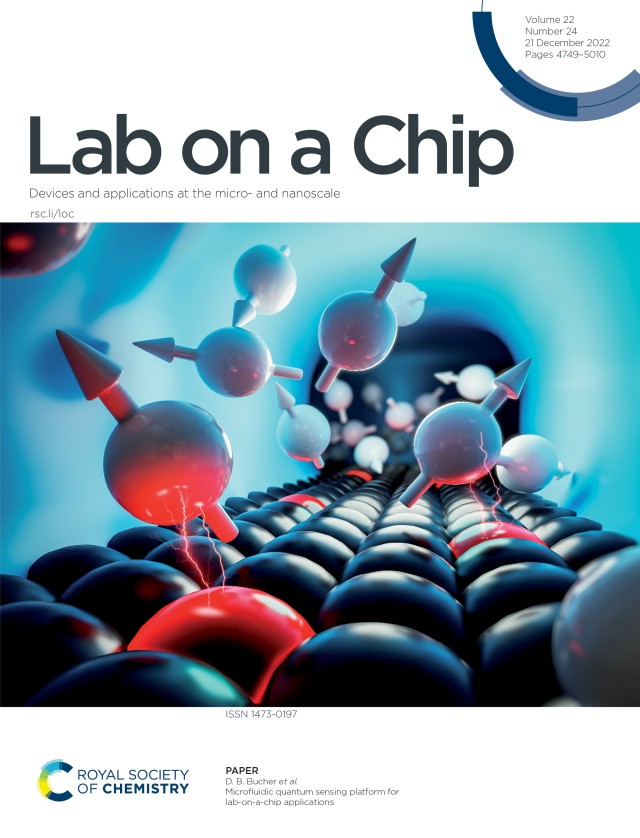7 December 2022
Quantum Sensing meets Lab-on-a-Chip
Researchers at the Technical University of Munich, LightFab GmbH, and Fraunhofer Institute for Applied Solid-State Physics have demonstrated that solid-state quantum sensors can be interfaced with microfluidics without compromising either technology. This platform enables novel physical and chemical analysis capabilities within lab-on-a-chip devices. The group's work, led by MCQST member Dominik B. Bucher, has been featured on the cover of Lab on a Chip.

Here, atom-sized quantum sensors are highly promising to overcome current limitations and have already enabled measurements of, e.g., temperature, electric or magnetic fields on the nano- to microscale.
Quantum sensing is a sub-field of quantum technology in which researchers use qubits, the quantum mechanical equivalent of a computer bit, as sensors. In essence: While quantum computing tries to isolate their qubits from the environment to reduce interactions as much as possible, we embrace these interactions, which allows us to use qubits as ultra-sensitive sensors. However, the technical complexity of both fields has so far impeded an uncompromising combination of LOC systems and quantum sensors, with trade-offs in, e.g., biocompatibility or sensing capabilities.
The researchers' team led by Dominik Bucher combined these two technologies by developing a fully integrated microfluidic platform for solid-state spin quantum sensors - in this case: the nitrogen-vacancy (NV) center in diamond - specifically for lab-on-a-chip applications. The developed platform fulfills all quantum sensing requirements, such as fast spin manipulation and efficient spin-state read-out, enabling NV center sensing capabilities.
To produce the microfluidic platform, selective laser etching in fused silica has been employed. This technology allows easy adaptability, arbitrary channel and chip geometries, and biocompatibility. Therefore, generating various microfluidic operations, such as mixers or cell traps, directly on top of the diamond surface is viable, permitting non-invasive studying of processes at the point of interest.
Lastly, the team demonstrated different NV center-based sensing schemes for chemical analysis in our microfluidic platform, like high-resolution microscale nuclear magnetic resonance spectroscopy, highlighting the immense potential of quantum sensors in LOC systems. The study thus paves the way for new chemical analysis capabilities in LOC devices with applications in electrochemistry, high-throughput reaction screening, or single-cell investigations. „Our paper is a decisive step toward the real-world application of quantum sensing in life sciences.” mentiones Robin Allert, first author of the publication.
Publication
Microfluidic quantum sensing platform for lab-on-a-chip applications
R. D. Allert*, F. Bruckmaier*, N. R. Neuling*, F. A. Freire-Moschovitis, K. S. Liu, C. Schrepel, P. Schätzle, P. Knittel, M. Hermans and D. B. Bucher
Lab Chip, 2022, Advance Article
DOI: 10.1039/D2LC00874B
Contact
Prof. Dr. Dominik B. Bucher
TUM School of Natural Science
Lichtenberg Str. 4
85748 Garching